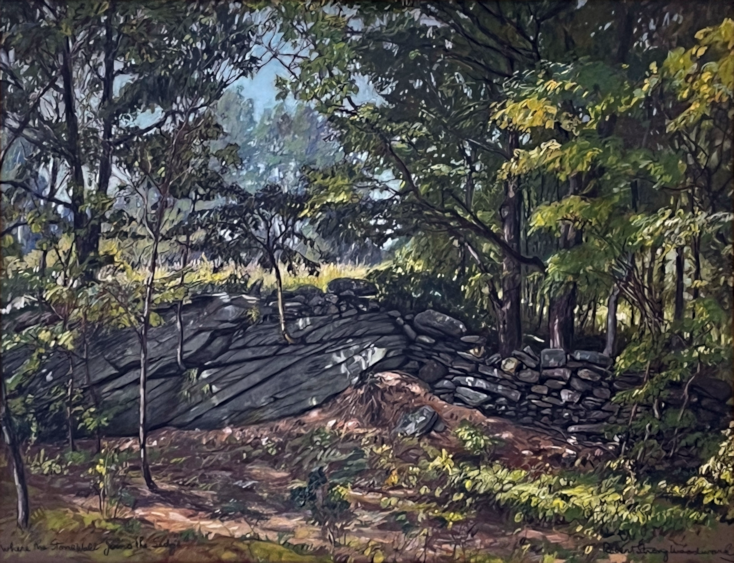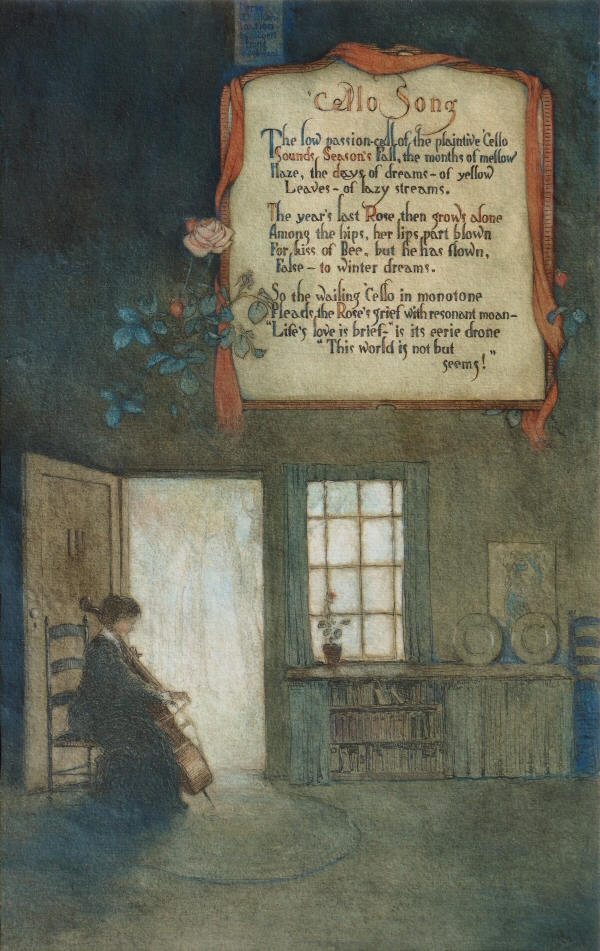Quick Reference
1915
Unknown
Pastel on Board
Landscape
Rocks & Stonewalls
22" x 29"
Unknown
Given by RSW as a
wedding gift...
NA
Featured Artwork: Where the Stonewall Joins the Ledge
RSW's Diary Comments
 Woodward did not keep a record of his chalk drawings.
Woodward did not keep a record of his chalk drawings.
Editor's Note:
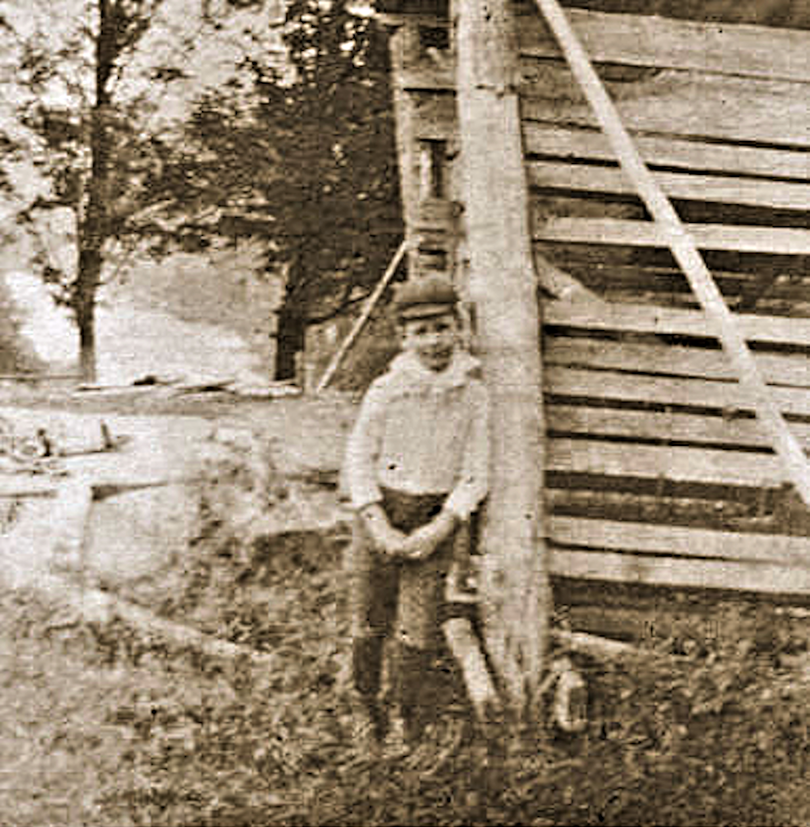
 9 year old Robert on his grandparents
9 year old Robert on his grandparents
farm the summer of 1894
From the family's oral history this pastel was given as a wedding gift to distant cousin of Woodward's
grandmother Julia Ware. The couple was wed in 1915, thus the year we attach to it. Growing up, from the age of 6 to 20 years
old, young Robert would come home to Buckland from wherever they were living at the time and stay with his grandparents. It
is not unreasonable to believe that he would get to know the Ware family during those summers.
It is also not
entirely inconceivable the Woodward was making chalks drawing before he committed himself to becoming a professional
landscape painter in 1917. His first professional exhibition was the 1918 Boston Art Club's First Annual, Paintings by
New England Artists, show. The artist entered two paintings to hang on the walls of the club-- an oil painting named,
Fall Fires and a pastel/chalk named,
Hill Farm. The chalk drawing receiving the greater praise... see more below.
Additional Notes
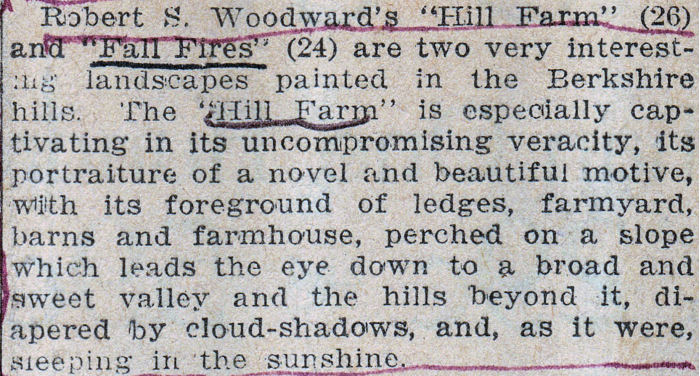
 Boston Evening Transcript Oct. 18, 1918
Boston Evening Transcript Oct. 18, 1918
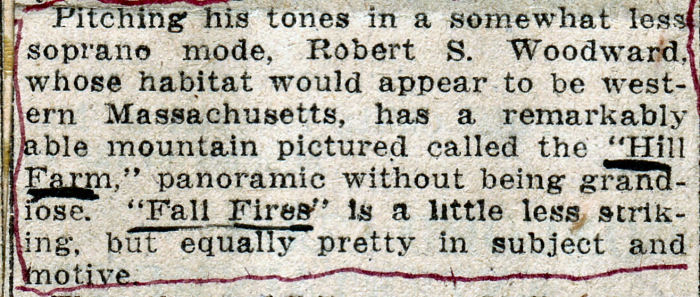
 Boston Herald, Oct. 18, 1918
Boston Herald, Oct. 18, 1918
The Review #1 of Woodward's first public pastel:
"The 'Hill Farm' is especially captivating in its uncompromising veracity, its portraiture of a novel and beautiful motive, with its foreground of ledges, farmyard, barns and farmhouse, perched on a slope which leads the eye down to a broad and sweet valley and the hills beyond it, diapered by cloud-shadows, and, as it were sleeping in the sunshine."
The Review #2 of Woodward's first public pastel:
"Pitching his tones in a somewhat less soprano mode, Robert S. Woodward, whose habitat would appear to be Western Massachusetts, has a remarkably able mountain picture called the 'Hill Farm,' panoramic without being grandiose. 'Fall Fires' is a little less striking, but equally pretty in subject and motive.
---------------------------------------------------------------------------------------------------------------------------------
It is not at all surprising to find a chalk drawing from a period of time prior to Woodward becoming a professional landscapist.
From 1911 through 1917, he earned his living as a commercial artist making cards with fine lettering, and designing heraldry
(family crest), bookplates, as well as making home decor art and crafts such as
Illuminations (see the to the right) and reverse glass paintings. The bookplate business Woodward earned money designing
pre-dates his arrival back home in Buckland. He was making bookplates as early as 1908 living on his own in Redondo Beach,
California.
Woodward also has a long history of making personalized gifts and cards for family and friends. As a
youth it is one of his favorite activities. The illumination to the right is a gift for his cousin
Florence and it is clearly made with pastel. If he has been
working with pastel longer and more frequently than he was painting with oil, than it would make sense that his chalk drawings
would be more advanced and skilled.
But that is not all there is to say about Woodward's history with pastel. In the
mid-1920s, the artist would make a concerted and determined effort to alter his oil painting style and motive to closer resemble
the color, light and luminosity of his chalk drawings culminating to the 1929 Pynchon Gallery Exhibition featuring the Chalk Drawing.
Sixteen pastels hung at the show, some of them accompanied by an oil painting of the same scene, "... giving the spectator
an opportunity to note the similarity of treatment given to these widely varying mediums. (The Springfield Daily, Dec. 12, 1929)

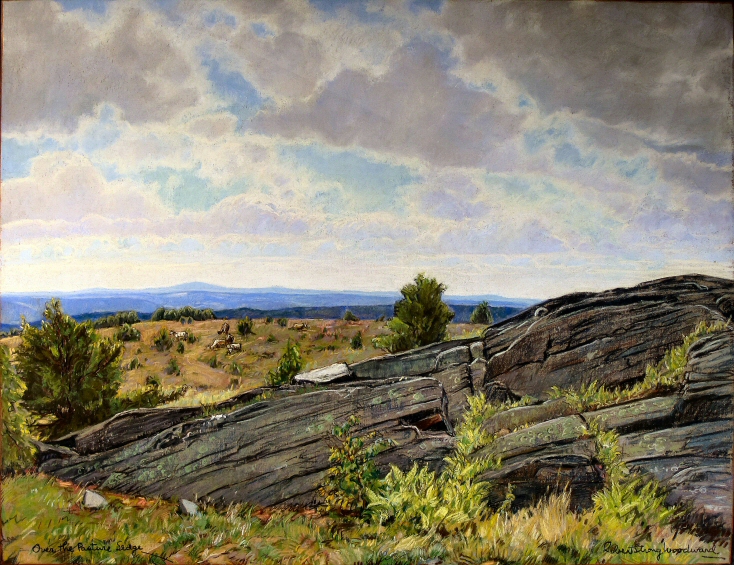
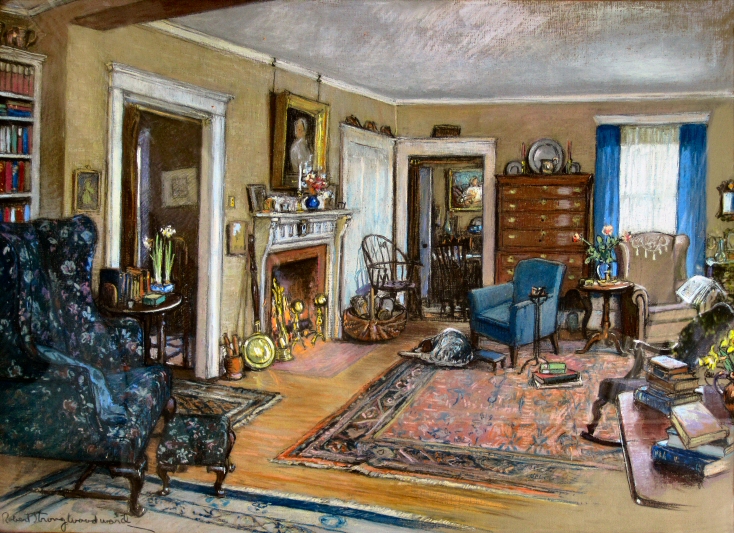
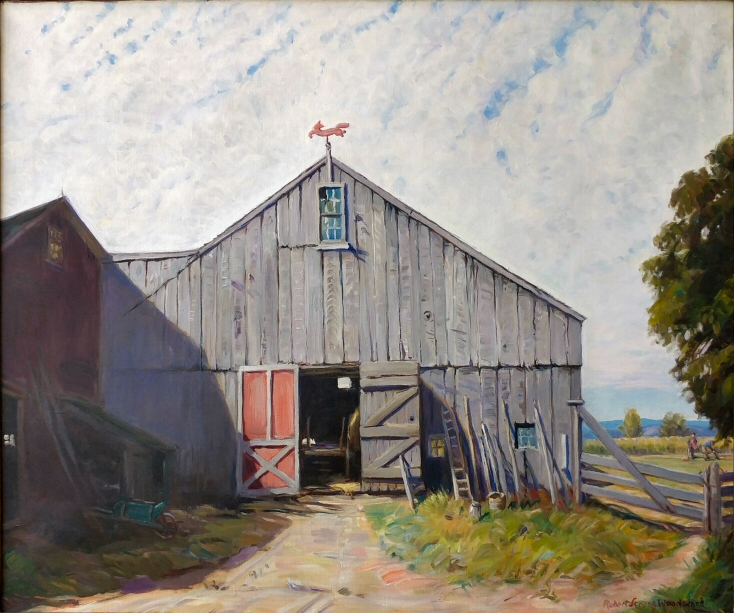
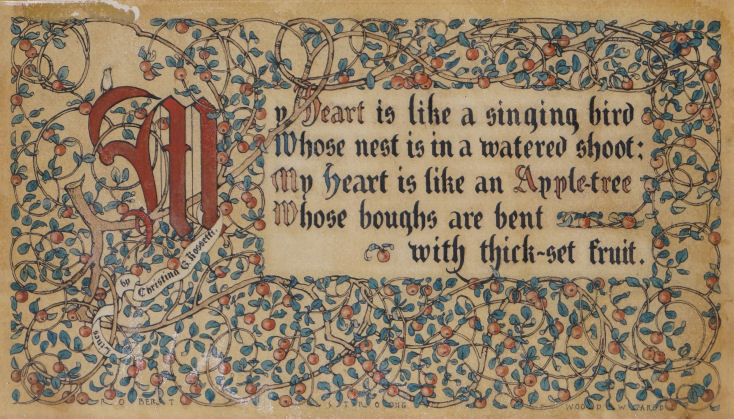
.png)

